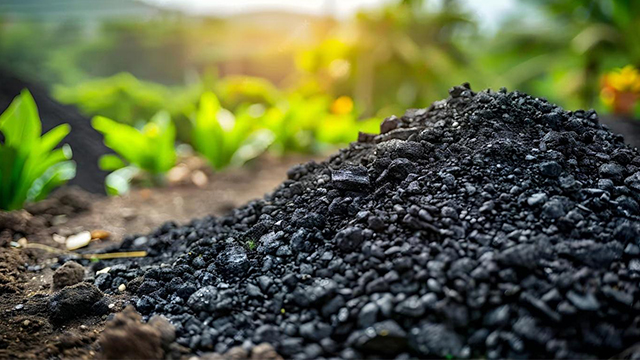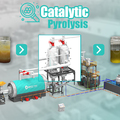Forestry operations generate massive quantities of residual biomass. Logging offcuts, bark, sawdust, and thinning debris often remain underutilized, frequently ending up as waste or low-value fuel. The integration of a pyrolysis plant into forestry supply chains creates a high-efficiency mechanism for valorizing these residues while advancing a circular economy.
Biomass Conversion Without Waste
Forestry residues typically have limited market applications, and conventional disposal methods—such as open burning or landfill—result in carbon emissions and nutrient losses. A biochar production equipment provides a controlled thermochemical process to convert lignocellulosic waste into valuable products: biochar, syngas, and bio-oil.
Unlike incineration, pyrolysis avoids combustion. The low-oxygen environment facilitates carbon retention in solid form (biochar), enabling sequestration rather than emission. This not only reduces the climate footprint of forestry operations but also enhances material circularity.

Biochar as a Regenerative Soil Amendment
Forests face increasing challenges from nutrient depletion, soil acidification, and post-harvest erosion. Biochar derived from forestry residues—such as pine bark, hardwood chips, or sawdust—possesses high porosity and cation exchange capacity. When applied to degraded soils, it stabilizes organic matter, moderates pH, and boosts microbial activity.
This solid-phase carbon product remains in soil for centuries, essentially storing atmospheric carbon captured by trees during growth. As a co-benefit, biochar improves moisture retention and reduces nutrient leaching, particularly in reforestation or agroforestry zones.
Powering Local Industry with Syngas
The gaseous output from pyrolysis, known as syngas, comprises hydrogen, methane, and light hydrocarbons. In remote forestry regions, syngas can be a decentralized energy carrier. It can fuel the pyrolysis reactor itself, generate electricity, or be purified for heating kilns, greenhouses, or drying facilities.
This self-reliant energy loop minimizes dependency on fossil inputs and supports energy access in off-grid areas. It is especially valuable in sawmill-dense regions where power demand is high and infrastructure is limited.
Bio-Oil for Renewable Material Streams
The liquid fraction of pyrolysis—bio-oil—is a viscous compound containing water-soluble organics and phenolics. While not directly substitutable for diesel, it holds promise for use in industrial boilers or as a feedstock for chemical refining. Forestry-based pyrolysis can thereby create ancillary revenue streams from waste, diversifying the economic base of timber companies and wood processors.
Pilot projects in northern Europe and Canada have demonstrated bio-oil integration into district heating systems, creating synergies between forest operations and municipal energy schemes.
Circularity Through Carbon Credit Generation
The permanence of carbon stored in biochar allows forestry-linked pyrolysis operations to access carbon markets. Certification under frameworks like the European Biochar Certificate (EBC) or Puro.earth enables forestry companies to monetize carbon sequestration efforts.
A pyrolysis plant that converts waste wood into stable carbon contributes both to climate mitigation and financial viability. By doing so, it turns a cost center (waste disposal) into a revenue-generating climate service.
Industrial Symbiosis in Forestry Hubs
When sited near lumber mills or furniture manufacturers, a pyrolysis plant transforms linear value chains into cyclical systems. Waste from primary processing becomes the input for pyrolysis. Its outputs—biochar, gas, and oil—feed back into forestry, agriculture, or energy systems. Ash, another byproduct, serves as a mineral-rich fertilizer, closing the nutrient loop.
Such localized symbiosis reduces logistics costs and fosters regional bioeconomy clusters. It also offers a scalable blueprint for forestry-dependent countries seeking low-emission development pathways.
Reinventing Residuals into Strategic Resources
The forestry sector stands at a crossroads. While the demand for wood-based products rises, sustainable management requires new tools to reduce waste and maximize resource efficiency. Pyrolysis offers a technically robust, commercially viable approach to achieve these goals.
In doing so, it enables forests to function not only as sources of timber, but as perpetual carbon sinks and material regeneration engines. This positions pyrolysis as a cornerstone of the circular forestry economy.





